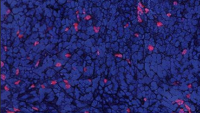Working with an international team of collaborators, scientists at Columbia University have found a way to shift the balance of a type of white blood cell inside a stomach tumor, causing the immune system to…

Working with an international team of collaborators, scientists at Columbia University have found a way to shift the balance of a type of white blood cell inside a stomach tumor, causing the immune system to…